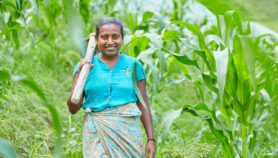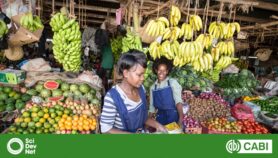By: Wagdy Sawahel
Send to a friend
The details you provide on this page will not be used to send unsolicited email, and will not be sold to a 3rd party. See privacy policy.
Research published this week suggests that rising levels of ozone at the Earth’s surface could reduce soybean harvests.
However, independent researchers say the findings should be treated with caution, as new crop varieties that tolerate higher levels of ozone could be available by then.
Ozone forms when gases produced by cars and industrial processes react with sunlight. The Intergovernmental Panel on Climate Change predicts a 23 per cent increase in surface ozone by 2050.
Stephen Long of the University of Illinois, United States, and colleagues used an approach called FACE (free-air gas concentration enrichment) to simulate this increase for the first time in open soybean fields.
They found that yields fell by 20 per cent over two growing seasons.
Previously, similar studies on plants grown in artificial environments, such as greenhouses, suggested a smaller role for rising ozone levels.
FACE technology allows plants to be grown under more life-like conditions, preserving the natural interactions between soil, plants and the atmosphere.
Alan Davison of the University of Newcastle, United Kingdom, is critical of the study’s long-term predictions, however.
He points out that crop varieties grown in 2050 will have been developed under the prevailing conditions of the previous decade, making it likely that they would have some degree of resistance to high ozone levels.
Crop varieties are known to vary greatly in their response to ozone. Some are unaffected by high concentrations of the gas.
Plant breeders developing ozone-resistant crops should consider “both yield and nutritional quality, which can also be affected by exposure to ozone”, says Lisa Emberson of the Stockholm Environment Institute.
Soybean is one of the world’s main crops, is grown widely in Latin America as well as in China and India, and is particularly susceptible to ozone.
“Long’s study highlights the need for more rigorous air quality standards as well as more fuel efficient automobiles,” says Evan De Lucia, head of the department of plant biology at the University of Illinois.
The study was published online by the journal New Phytologist on 14 March.
Link to abstract of the paper in New Phytologist
Reference: New Phytologist doi:10.1111/j.1469-8137.2006.01679.x (2005)












